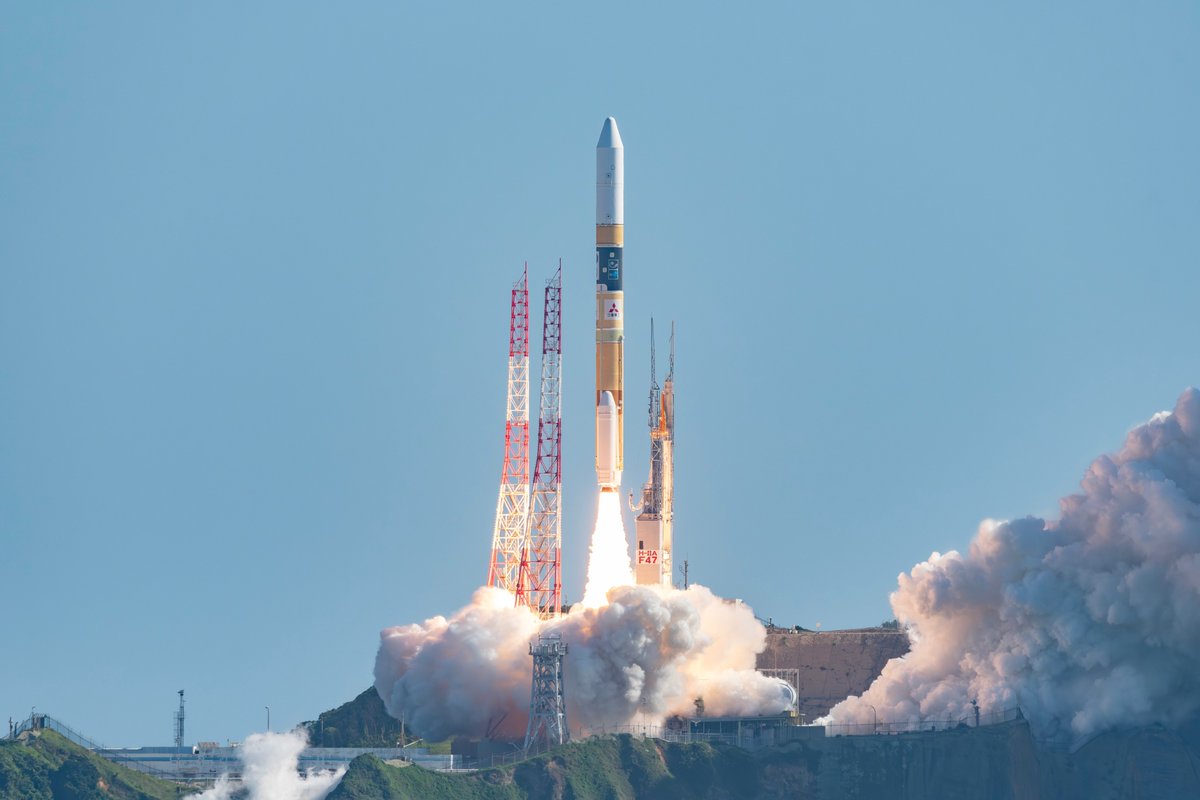
Spacecraft Landing
Hayabusa-2 Sample Returns to Earth
Earth H-IIA 202 | Hayabusa-2
When Hayabusa-2 flies past Earth in December 2020, it will release the capsule spinning at one revolution per three seconds. The capsule will re-enter the Earth's atmosphere at 12 km/s and it will deploy a radar-reflective parachute at an altitude of about 10 km, and eject its heat-shield, while transmitting a position beacon signal. The sample capsule will land at the Woomera Test Range in Australia.
Related Information
H-IIA 202 | Hayabusa-2
Mitsubishi Heavy Industries | JapanTanegashima Space Center, Japan
Dec. 3, 2014, 4:22 a.m.
Status: Launch Successful
Mission:
Hayabusa2 (Japanese: はやぶさ2, "Peregrine falcon 2") is an asteroid sample-return mission operated by the Japanese space agency, JAXA. It follows on from the Hayabusa mission which returned asteroid samples in June 2010. Hayabusa2 carries multiple science payloads for remote sensing, sampling, and four small rovers that investigated the asteroid surface to inform the environmental and geological context of the samples collected.
Heliocentric N/AFalcon 9
Dror-1
Space Launch Complex 40 - Cape Canaveral SFS, FL, USANote: SpaceX identifies the mission as "Commercial GTO 1". Dror-1 is a geostationary communication satellite built and developed by Israel Aerospa…
Falcon 9
Starlink Group 10-28
Space Launch Complex 40 - Cape Canaveral SFS, FL, USAA batch of 28 satellites for the Starlink mega-constellation - SpaceX's project for space-based Internet communication system.
Soyuz 2.1a
Progress MS-31 (92P)
31/6 - Baikonur Cosmodrome, Republic of KazakhstanProgress resupply mission to the International Space Station.
Long March 4C
Shiyan 28 B-01
Launch Complex 3 (LC-3/LA-1) - Xichang Satellite Launch Center, People's Republic of ChinaSatellite officially named for "space environment detection" purposes, exact details unknown.
Falcon 9
Starlink Group 10-25
Space Launch Complex 40 - Cape Canaveral SFS, FL, USAA batch of 27 satellites for the Starlink mega-constellation - SpaceX's project for space-based Internet communication system.
Falcon 9
MTG-S1
Launch Complex 39A - Kennedy Space Center, FL, USASecond of EUMETSAT's third generation of weather satellite.
New Shepard
NS-33
West Texas Suborbital Launch Site/ Corn Ranch - Corn Ranch, Van Horn, TX, USANS-33 is the 13th crewed flight for the New Shepard program and the 33rd in its history.
Falcon 9
Starlink Group 15-7
Space Launch Complex 4E - Vandenberg SFB, CA, USAA batch of 26 satellites for the Starlink mega-constellation - SpaceX's project for space-based Internet communication system.
H-IIA
GOSAT-GW (Ibuki GW)
Yoshinobu Launch Complex LP-1 - Tanegashima Space Center, JapanGOSAT-GW (Greenhouse Gases Observing Satellite Greenhouse gases and Water cycle), also known as Ibuki GW and formerly known as GOSAT 3, is JAXA's nex…
Electron
Symphony In The Stars
Rocket Lab Launch Complex 1B - Rocket Lab Launch Complex 1, Mahia Peninsula, New Zealand'Symphony In The Stars' is the first of two dedicated missions on Electron to deploy a single spacecraft to a 650km circular Earth orbit for a confid…


